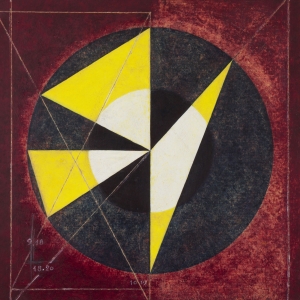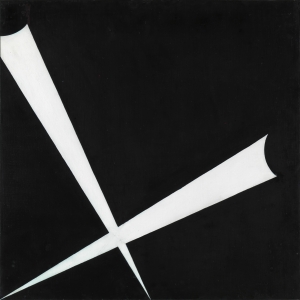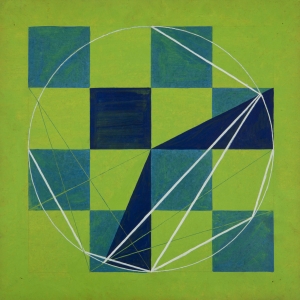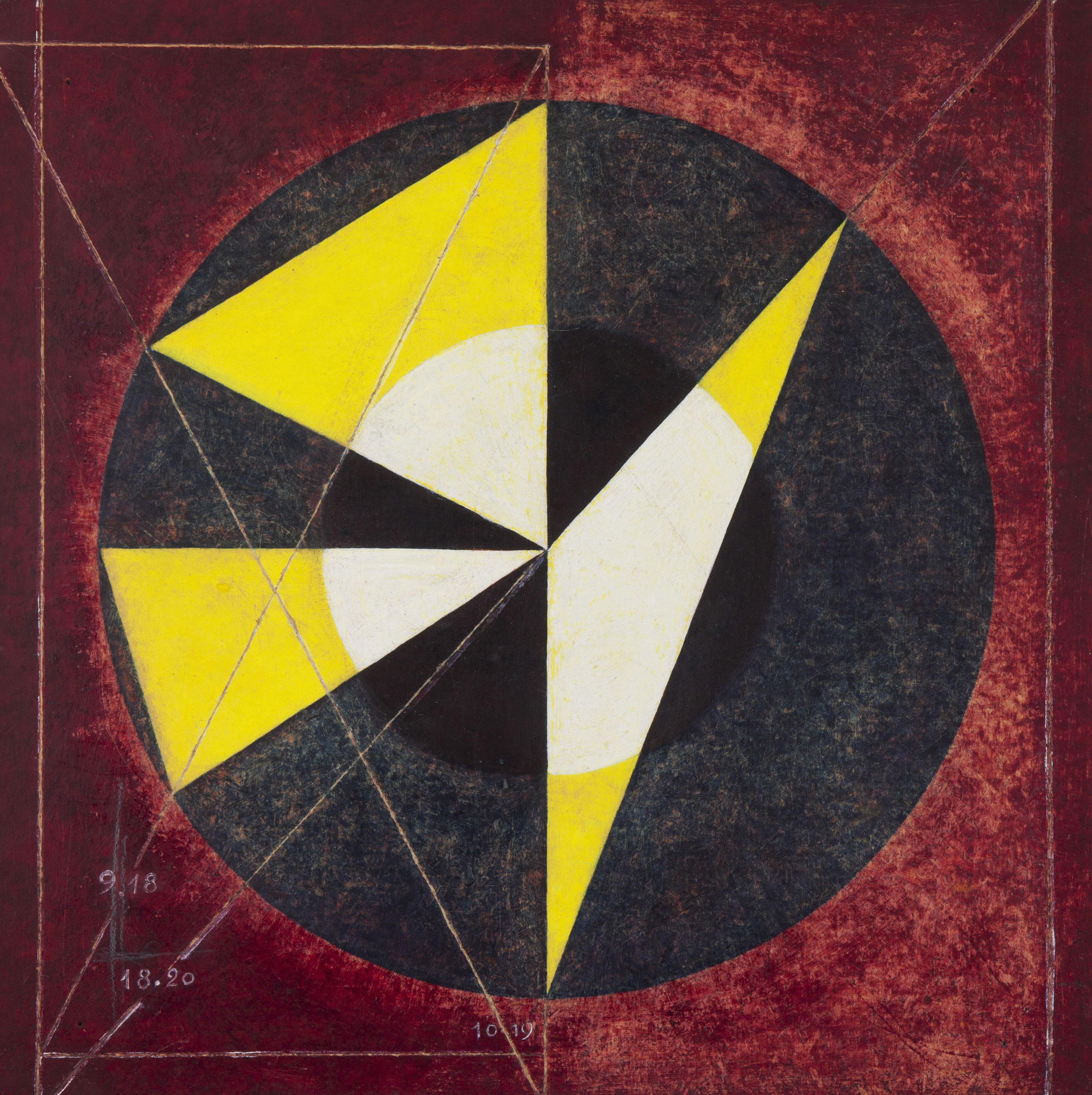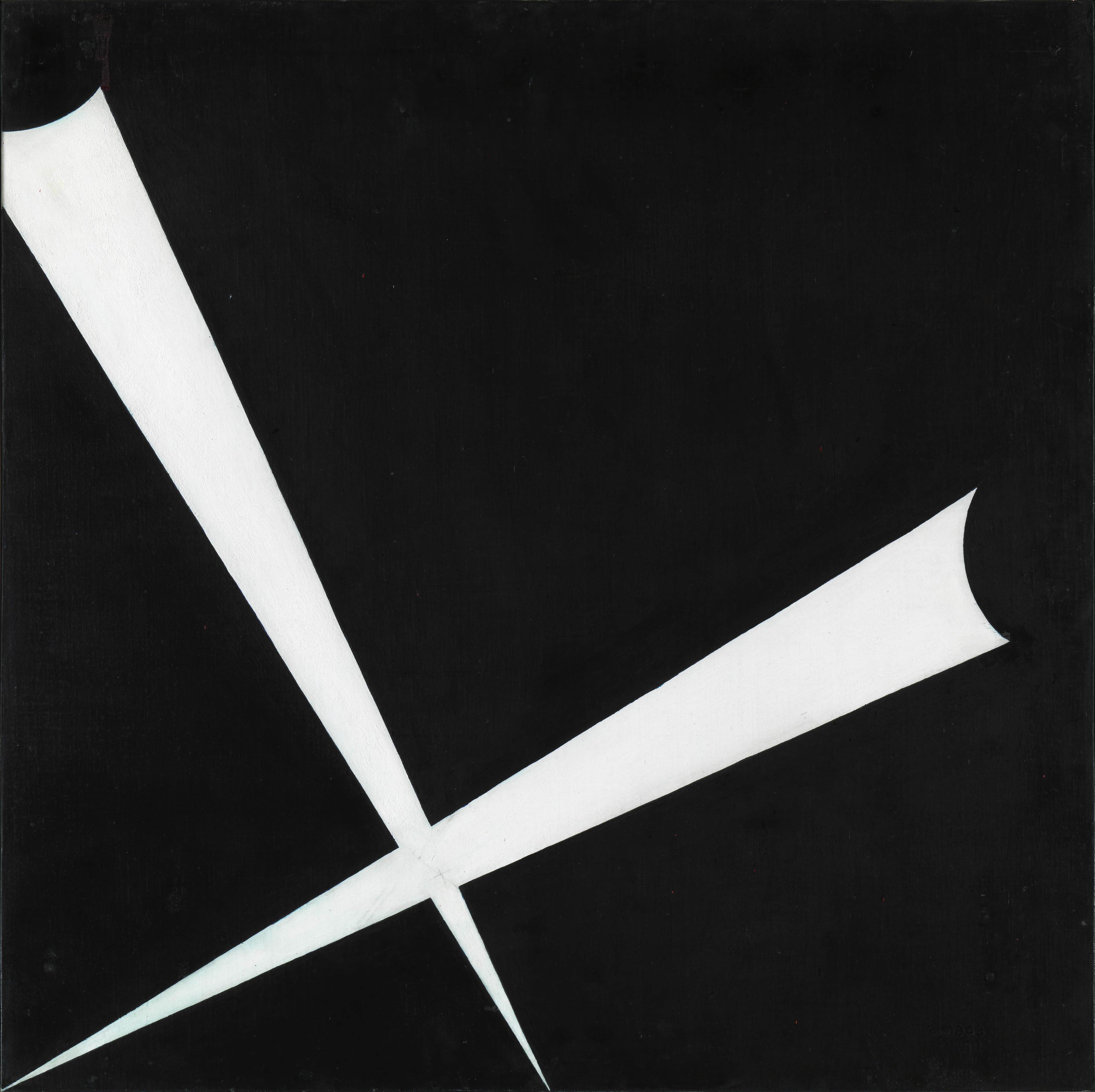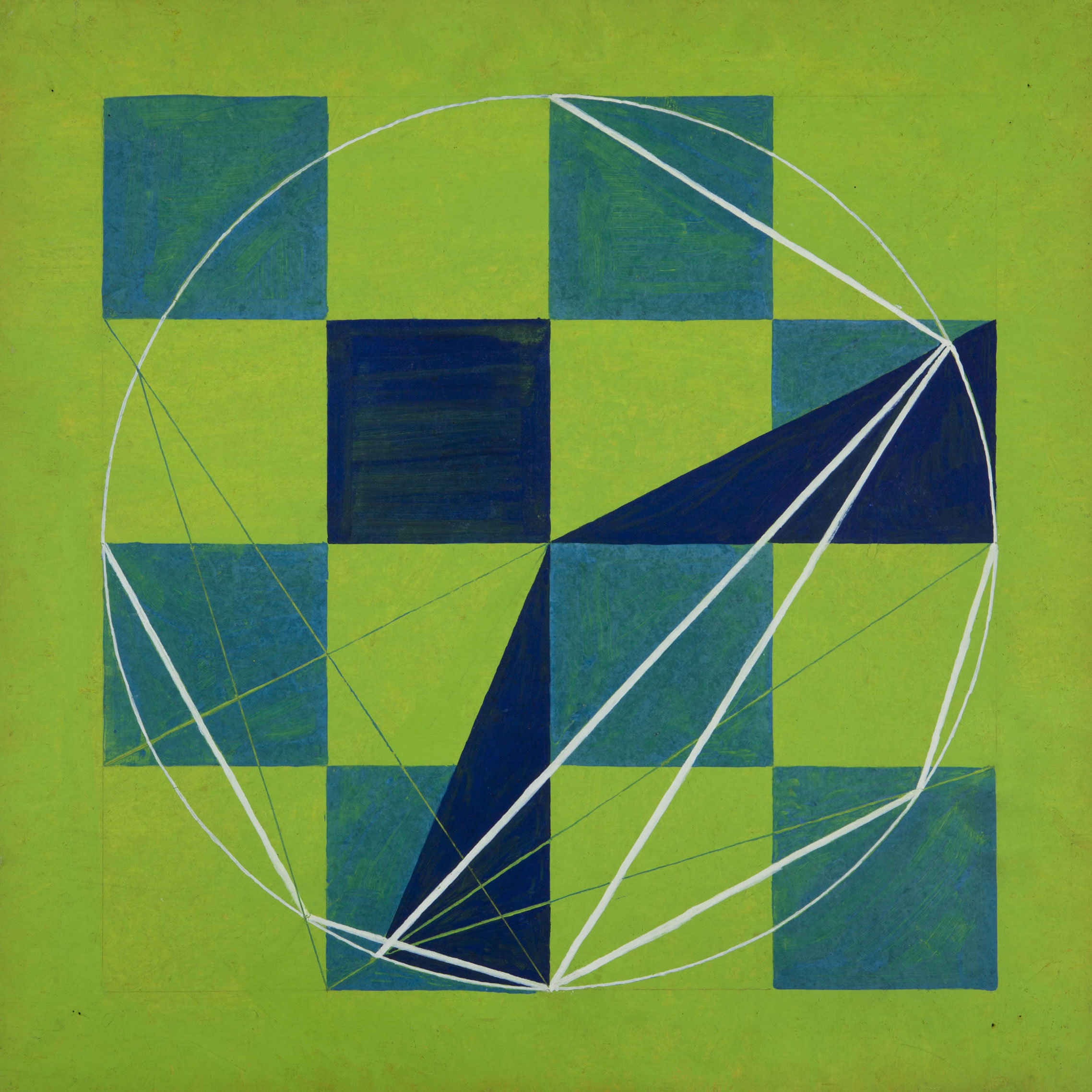

Seeing
Almada Negreiros privileged sight over every other sense, placing it at the root of all art and thought. Towards the end of his life, he elected the word spectacle as that which could best define the multiple languages of art. Etymologically, it signified contemplating, seeing, from the Latin spectāre. Seeing was also the title that Almada had in mind for a book dedicated to his studies on geometry and numbers, of which only a part was published, in 1948, under the title Mito-Alegoria-Símbolo [Myth-Allegory-Symbol].
His autodidactic research sought a universal and intemporal language, common to all visual communication and “prior to words”. The work he developed focused primarily on two-dimensional geometry, in particular the geometrical properties contained in the relationship between circle and square. To the universal set of visual elements he gave the name canon, not as a rigid norm that all painting should conform to, but because he wanted to trace, pictorially, the essential rules of all visual representation.
Almada’s abstract paintings are thus, paradoxically, also figurative: they are the figuration of the geometrical relations he considered to be the basis of all representation.

